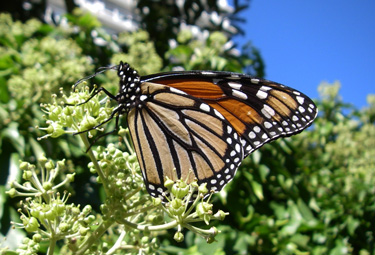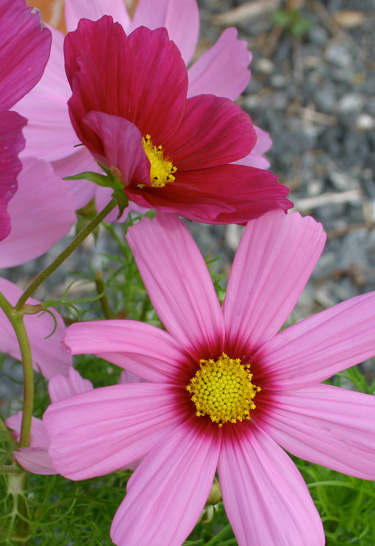Kids Go Gardening - flutterby butterfly
Butterflies are some of the most interesting and gorgeous creatures on Earth. As they flutter from flower to flower they are finding food, but also doing a very important job pollinating flowers so they can make fruit and seed.
Sadly, there are not as many butterflies as there used to be, but gardeners can do a lot to help them. The first thing is not to use sprays in the garden, as butterflies are extremely sensitive. As well, we can plant a butterfly garden…
Planting a butterfly garden is easy and you’ll be rewarded with the fluttering of butterflies all through the summer. All you need to do is grow the plants the caterpillars like to eat and the plants the adult butterflies feed on.
A good butterfly garden has a mixture of shelter and open spaces. The more colourful you can make your garden the better it is for nectar feeding butterflies. Butterflies are attracted to groups of flowers that make a big patch of colour. Purple, yellow, pink, white, orange and red flowers all work well. But because butterflies are nearsighted, a single plant might not produce enough colour for them to see. Mix it up so there’s tall flowers and short plants. And plant heaps! They’re also attracted to fragrant plants.
Butterflies will gather nectar from a wide range of plants, but they can be fussy about where they lay their eggs. Sometimes, the favoured host plant is a garden weed. For example, stinging nettle is the host plant of the NZ Red Admiral. Monarch butterfly caterpillars feed on swan plants (and related milkweed species), which are ideally planted early in summer to allow time for the plants to establish before the onslaught of summer caterpillars.
Butterfly gardens can be any size - a window box, in your garden, or even in a place that doesn’t even have a garden in it yet!
The Swan Plant
What a great host! Plant one in your garden for the monarch butterflies to lay their eggs on. Tiny caterpillars soon hatch from the eggs and get fatter and fatter as they eat the leaves. Watch as they transform into chrysalises and emerge as beautiful butterflies. It’s amazing!
Swan plants are available at your Go Gardening centre, or you could try growing some from seed (tip: remove the eggs off tiny seedlings so they have a chance to grow bigger before the caterpillars gobble them up!) For lots of butterflies, grow lots of swan plants!
Warning: Swan plants are poisonous! Don’t eat them unless you are a caterpillar.
Butterflies love flowers!
- Asters
- Bee balm
- Catmint
- Chrysanthemum
- Cosmos
- Dahlia
- Echinacea
- Hebe
- Helenium
- Marigolds
- Rudbeckia
- Salvia
- Scabiosa
- Sweet William
- Best of all, Swan Plants!
Plant the flowers and plants in a sunny spot that is sheltered from the wind. And make sure there’s water around – butterflies LOVE mud and sand puddles.
Scientists reckon there are between 15,000 and 20,000 varieties of butterfly and one of our favourites is the Monarch. The Monarch Butterfly NZ Trust is an organisation that helps protect our native butterflies. Look at their website for more tips. www.monarch.org.nz
Some things we bet you didn’t know about butterflies!
- Butterfly wings are actually transparent – they are made up of very thin layers of a thing called ‘chitin’ and the scales on top of the chitin reflect light.
- Butterflies taste with their feet – they have taste receptors there!
- Butterflies live on an all-liquid diet, usually nectar. No solid food here!
- Butterflies drink from mud puddles – it’s a source of minerals!
- Butterflies can’t fly if they’re cold.
- A newly emerged butterfly can’t fly.
- Butterflies only live for about 2 to 4 weeks.
- Butterflies are nearsighted, but they can see a lot of colours.
- Butterflies use their wings as camouflage themselves from predators.

2-Oct-2015

Monarch butterfly taking nectar from ivy flowers

Planting a Swan plant

Cosmos

